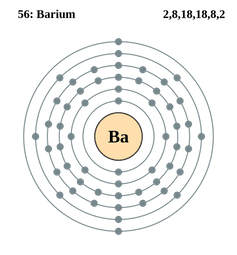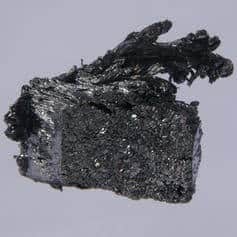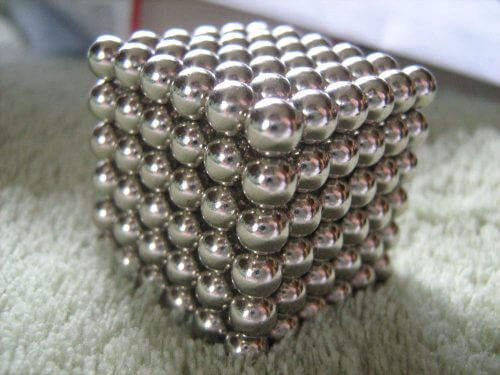The elements may be less rare than gold, but they are spread across the length and breadth of the planet in relatively low concentrations. Rare elements are usually found in rare basic rocks called carbonatites, for example basalt rocks in Hawaii or Iceland, or volcanic rock such as St. Helens volcano. There are only a few areas where there is a large amount of rare elements - and they are mostly found in China
[Translation by Dr. Nachmani Moshe]
Most people use rare elements every day - without even knowing it. This situation may change, this is in light of the fact that these rare materials are becoming the focal point in the trade war between the US and China.
1. What are rare elements?
In the narrow sense of things, these are elements like the other elements in the periodic table - such as carbon, hydrogen and oxygen - with atomic numbers from 57 to 71. There are two other elements (scandium and yttrium) with similar properties that are also sometimes associated with the rare element family, but the main ones are 15 These basics. In order to reach the first element in this family, the element lanthanum, you start with the element barium and add one proton and one electron to it. To get to the next rare element, just add one more electron and one more proton.

The fact that there are 15 rare elements is significant: Chemistry students may remember that when electrons are added to an atom, they arrange themselves in groups or layers called orbitals, sort of circular tracks around the atomic nucleus. The innermost circle can hold up to 2 electrons; Adding a third electron means creating a second circle to contain it, a circle that can contain a maximum number of 8 electrons; In the next step, an additional circuit is needed, which can contain a maximum number of 18 electrons. The fourth circle will also contain 18 electrons. Next, things get a little weird. Although there is enough space for electrons in the emerging fourth circle, the next eight electrons will be located in the fifth circle. And despite the large amount of space still available in the fifth circle, the next two electrons will actually be placed in the sixth circle. In the next step, the atom will become the substance barium, which has an atomic number of 56, and thus the orbitals begin to be filled again. Adding one more electron, to obtain the element to give, the first in the family of the rare elements, will result in the electron entering the fifth circle. For all elements, the electrons in the outermost circle are the ones that affect the chemical properties of that element. Since in the rare elements the set of electrons in the outermost circle is the same, their properties are quite similar.
2. Are the rare elements really rare?
Definately not; They are even much more common in the Earth's crust than many other useful elements. Even the rarest rare element, thulium (atomic number 69), is 125 times more common than the element gold. Whereas the least rare rare element, cerium (atomic number 58), is still 15 thousand times more common than gold.

Nevertheless, the elements are rare in another sense - mineralogists would call them "scattered", that is, they are mainly scattered along the length and breadth of the planet in relatively low concentrations. Rare elements are usually found in rare basic rocks called carbonatites, for example basalt rocks in Hawaii or Iceland, or volcanic rock such as St. Helens volcano. There are only a few areas where there is a large amount of rare elements - and they are mostly found in China, which produces more than eighty percent of the global annual amount. There are also several such areas in Australia, and also in a small number of other countries. The US has few areas where many rare elements are found, but the last American source of its kind in California was closed to mining back in 2015.
3. If they are not rare, are they expensive?
Yes, quite expensive. In 2018, the price of neodymium oxide (atomic number 60) was 107 thousand dollars per ton. The price is expected to increase to a price of 150 thousand dollars per ton by the year 2025. The rare element Europium is even more expensive - about 712 thousand dollars per ton of material. Part of the reason for the high prices is the fact that it is chemically difficult to separate these elements from others in order to obtain the pure substance.
4. What are the uses based on rare elements?
In the second half of the 63th century, the element europium (atomic number XNUMX) became most sought after for its role as a color-emitting material in video screens, including computer monitors and plasma televisions. In addition, the material is also used for the absorption of neutrons by control rods of nuclear reactors.

Today, other rare elements are also used in electronic devices. The element neodymium (atomic number 60), for example, is a powerful magnet used in smartphones, televisions, lasers, rechargeable batteries and computer drives. A future version of the Tesla electric vehicle is also expected to make use of this element. The demand for rare elements has been consistently high since the middle of the twentieth century, and there are really no substitute materials that can convert them. In light of the fact that rare elements are important to a modern society that is based on innovative technology, and in light of the difficulty of mining and using them, the trade war could put the US in a very bad place, a situation that could turn both the country and the rare elements themselves into pawns in the global economic game.

One response
What about element number 61?
the radioactive